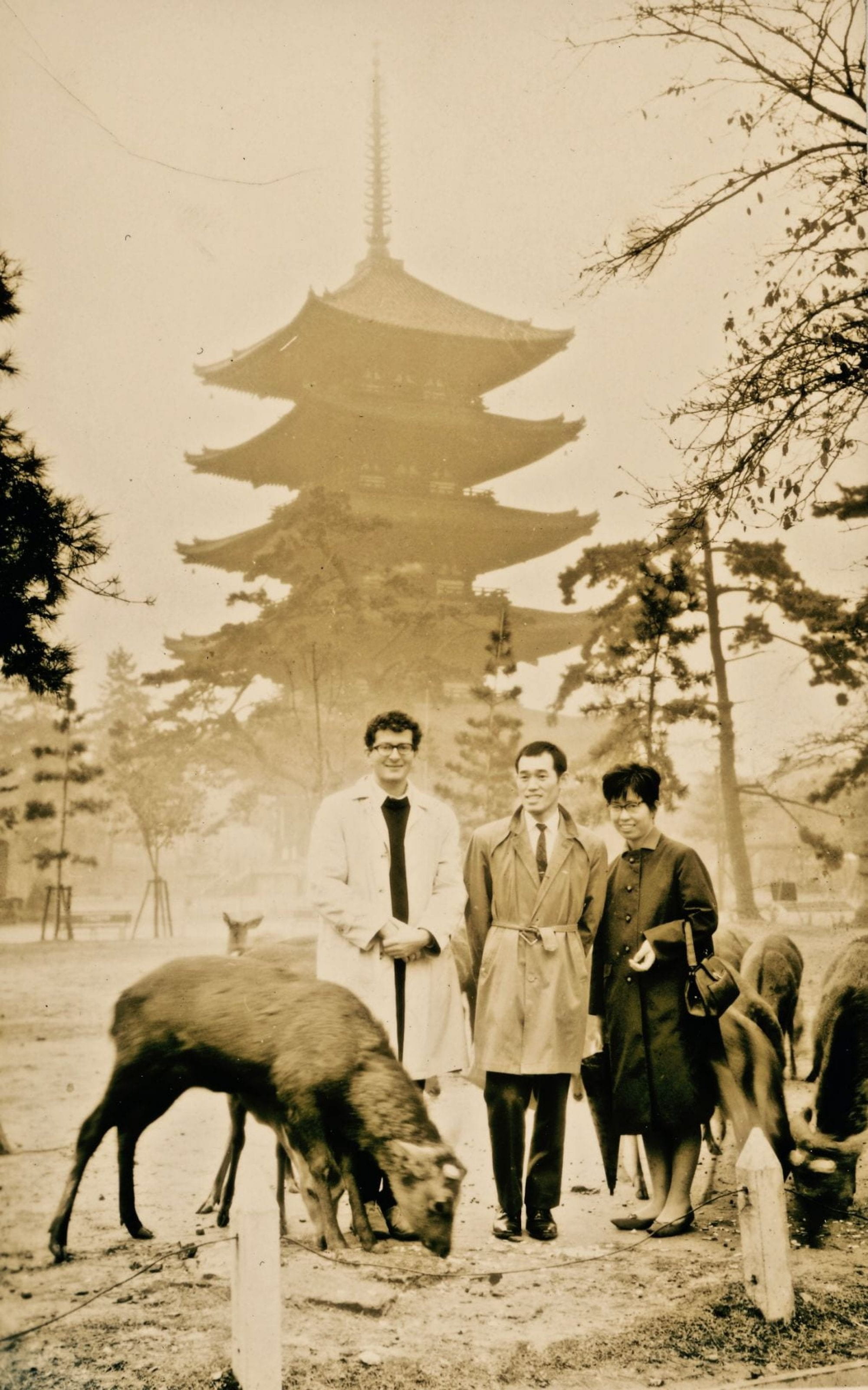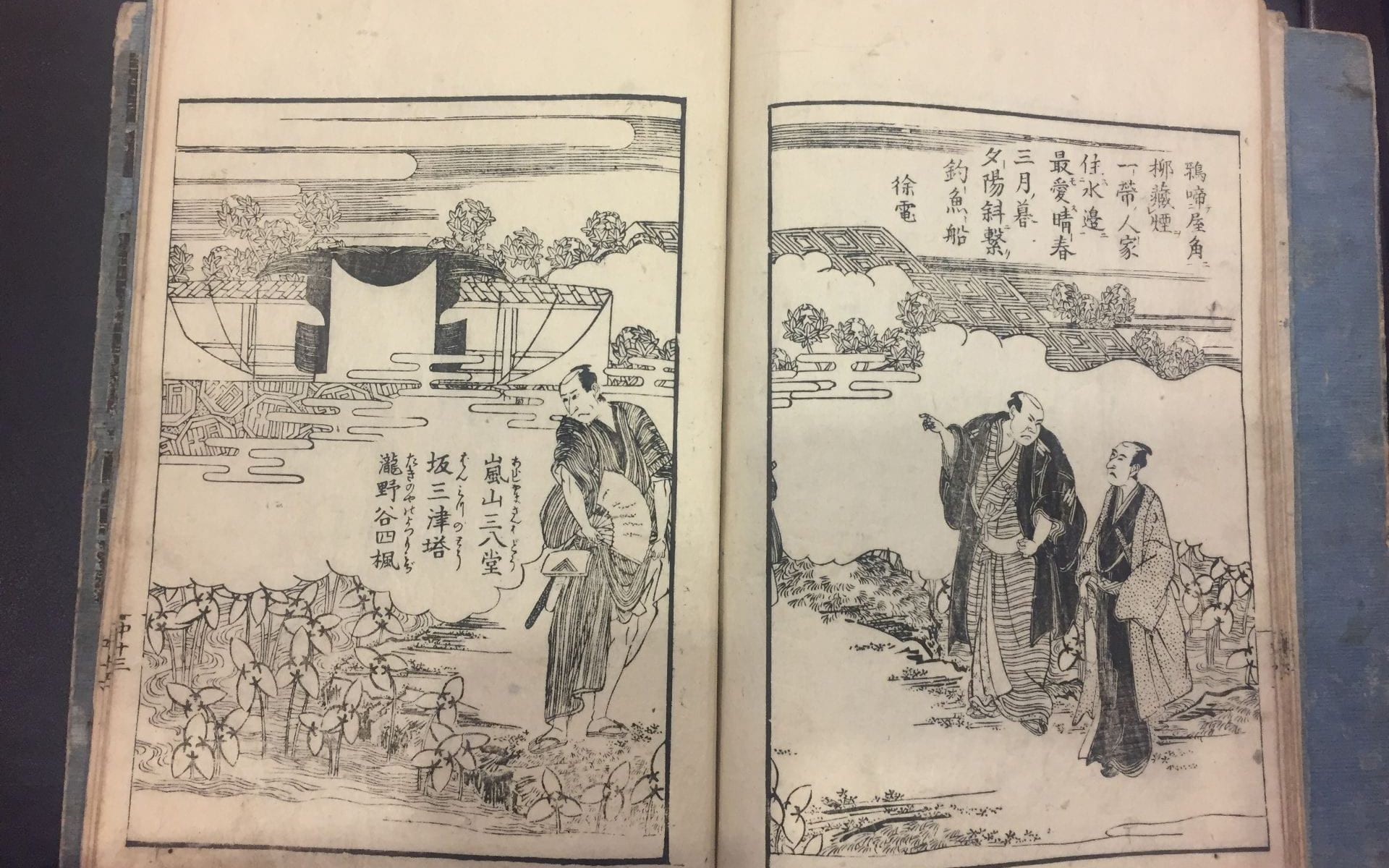
Artist: Utagawa Toyokuni 歌川豊国 (1769-1825)
Author: Takizawa Bakin 滝沢馬琴 (1767-1848)
Title: Yakusha meisho zue 戯子名所図会 (Pictorial Album of Famous Places with Actors)
Date: 1800
Publisher: Tsuruya Kiemon
Medium: Woodblock printed book, ink on paper
Gift of Arthur Tress, Arthur Tress Collection, Box 29, Item 11 (Toyokuni 2)
Imagination and landscape go hand in hand. Though images of places are often more deeply equated with observable reality, these images remain representation, not reality. Created at a specific moment in time, as part of a specific culture, these pictures are deeply bound with the meaning of the place. Some landscapes though are not just imagined, but are the vehicles for imagination. Through Edo period print culture, pictures of place could take on new meaning. In the hands of clever publishers, authors, and illustrators, the popularity of new geographies and topographies led to genre-crossing creations.

Yakusha meisho zue (1800), was the product of some of the top members of the Edo print world—written by Takizawa Bakin (also known as Kyokutei Bakin), illustrated by Utagawa Toyokuni, and published by Tsuruya Kiemon. While the true subject of the work was a clever commentary on contemporary kabuki, it was wrapped in the format of a meisho zue, a format of guide that became popular in the eighteenth century. In doing so, it drew upon a lengthy and celebrated tradition of conceptualizing place, marrying this tradition with the theatrical world of Edo.
In Japan, ideas of place were initially linked to representation in poetry. Locations known as meisho (名所, initially called na ga aru tokoro, “places with a name”) were called out and celebrated in poetry from the eighth century on. The first meisho sites were linked to the emperor’s ritual visitation of the lands of his realm, a practice known as miyuki (御幸). The invocation of these place names in poetry became known as utamakura (歌枕), “poem pillows” epithets that allowed a poem to pivot around layered concepts [Kamens]. These words, used and re-used in poems, acquired connotations over time; by merely invoking the name of a meisho the poet was able to tap into a literary and historical matrix.
The meisho tradition continued into the earliest landscape paintings in Japan, a genre known as meisho-e (名所絵, “pictures of famous places”). First appearing in the tenth century, these paintings derived from poetic conventions, which likewise became linked to the representation of these topographical spaces.[1] Working together, word and image prompted the reader/viewer to produce the imagined landscape.
Over time, though, the definition of what constituted a “meisho” evolved as urban sites and locations along major highways rose in popularity—specifically in the shogun’s capital of Edo. Edo, which had previously been a small fishing village, rose to prominence when it became the shogun’s seat of power. While it lacked in the traditional meisho associated with classical poetry, it soon developed its own famed sites. The Yoshiwara pleasure quarters, popular shops, and travel checkpoints could all become meisho in this new scheme and were included in many printed guidebooks.
[1] No landscape paintings from this era survive to this day. Scholars have relied on descriptions of poetry composed in relation to these images to determine the earliest appearances of these paintings. The earliest extant landscape image is considered to be the Jingōji senzui byōbu, which dates to c. 1200.
Other copies:
Harvard Yenching Library
National Institute of Japanese Literature
Waseda University Library
Selected reading:
Chino Kaori, “The Emergence and Development of Famous Place Painting as a Genre.” Review of Japanese Culture and Society 15 (2003), 40.
Edward Kamens, Utamakura, Allusion, and Intertextuality in Traditional Japanese Poetry (New Haven: Yale University Press, 1997).
Quintana Heathman Scherer
Posted April 6, 2022

